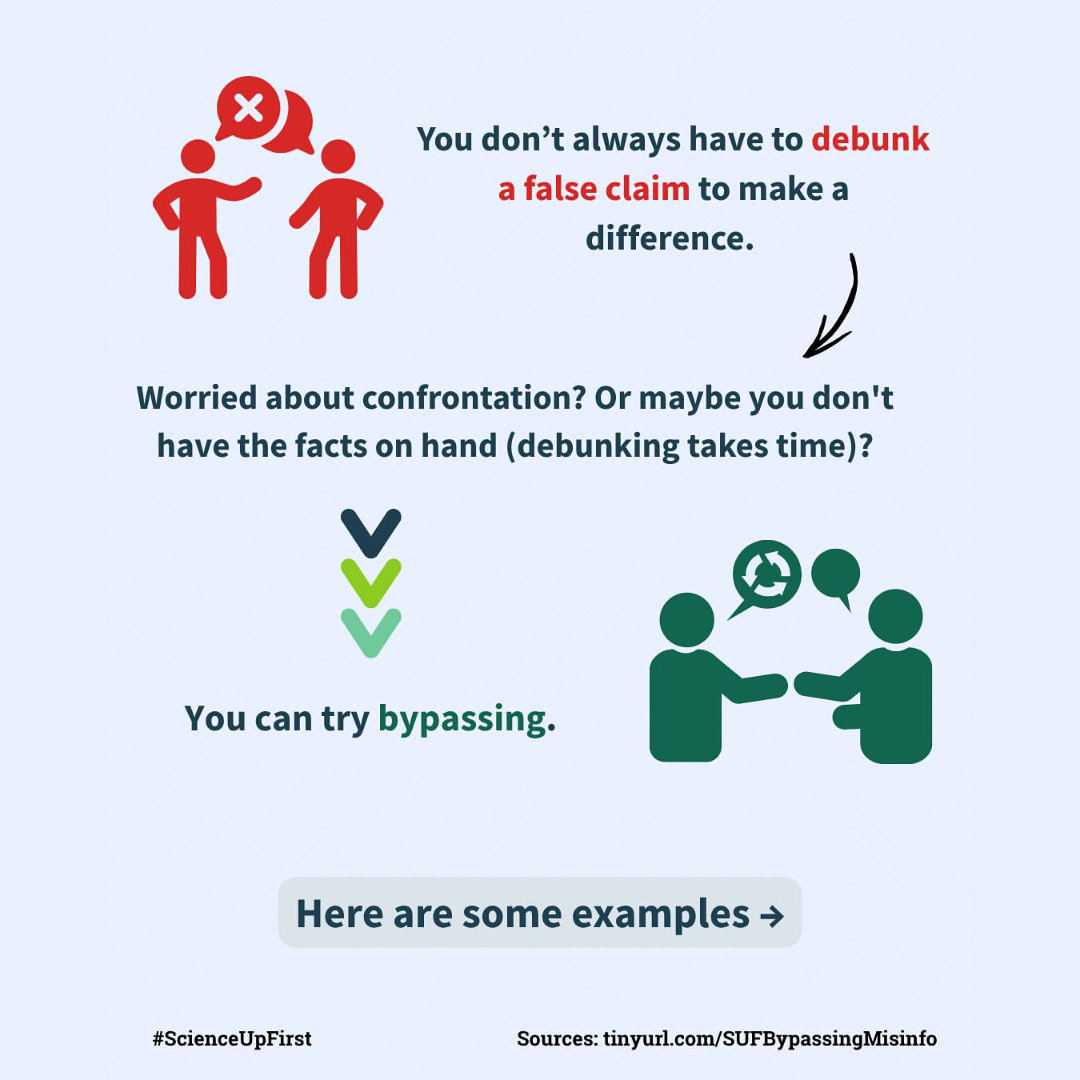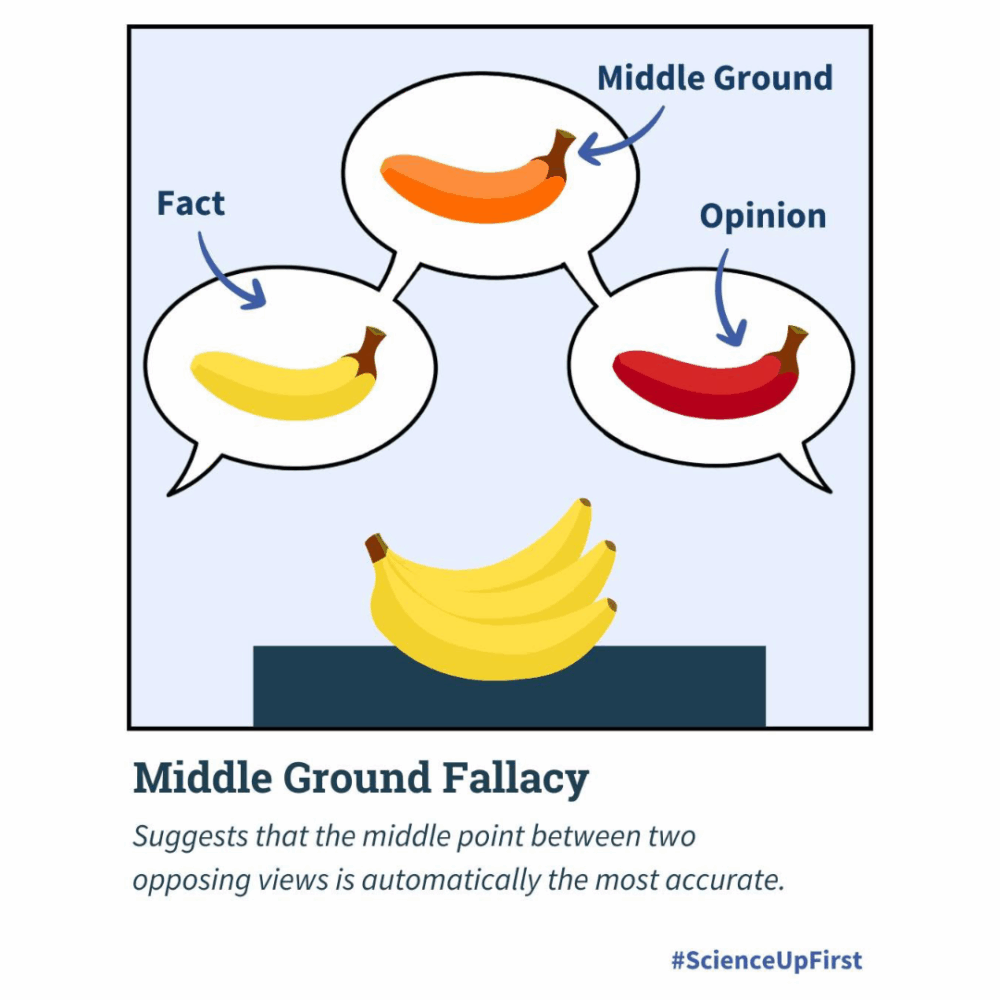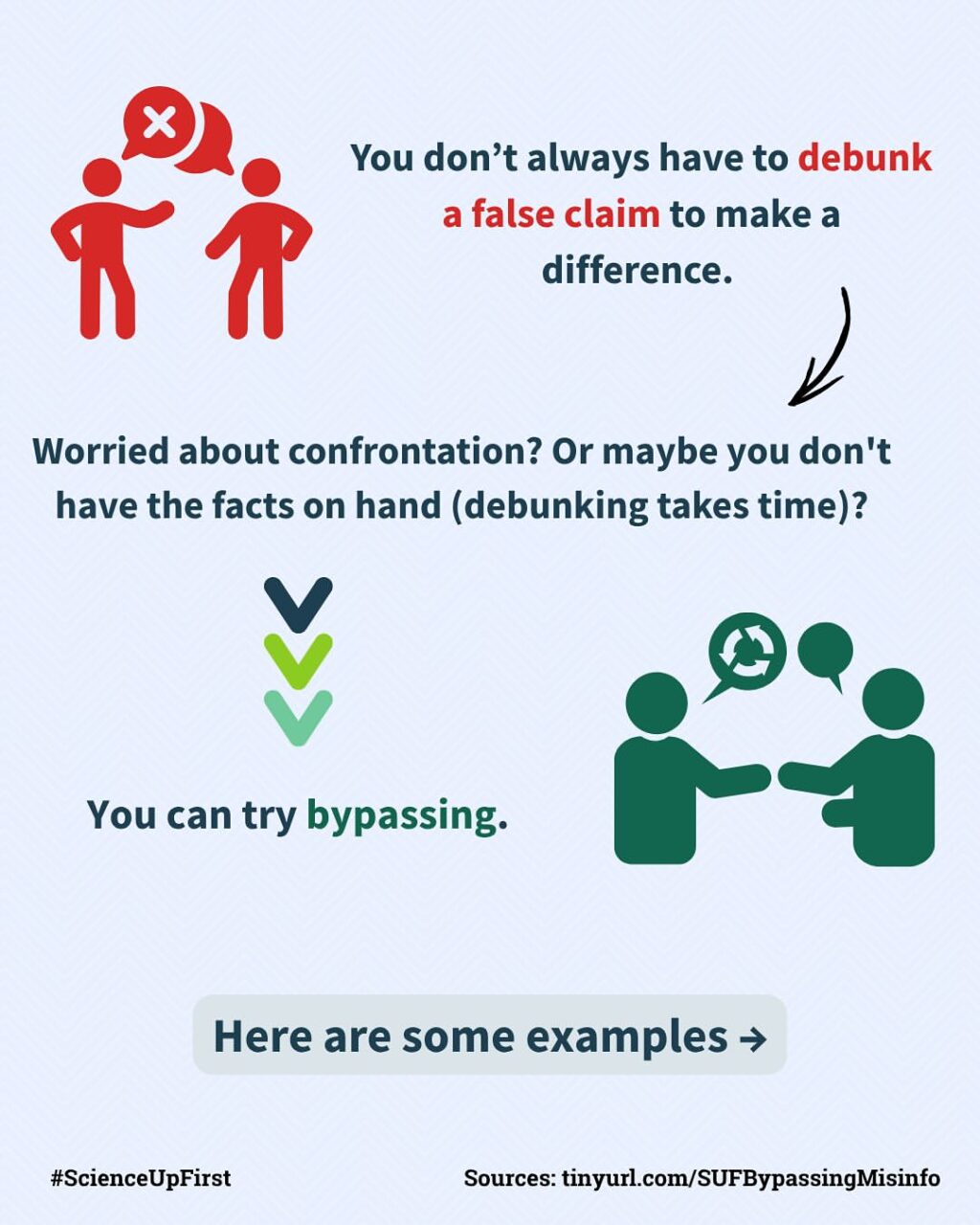
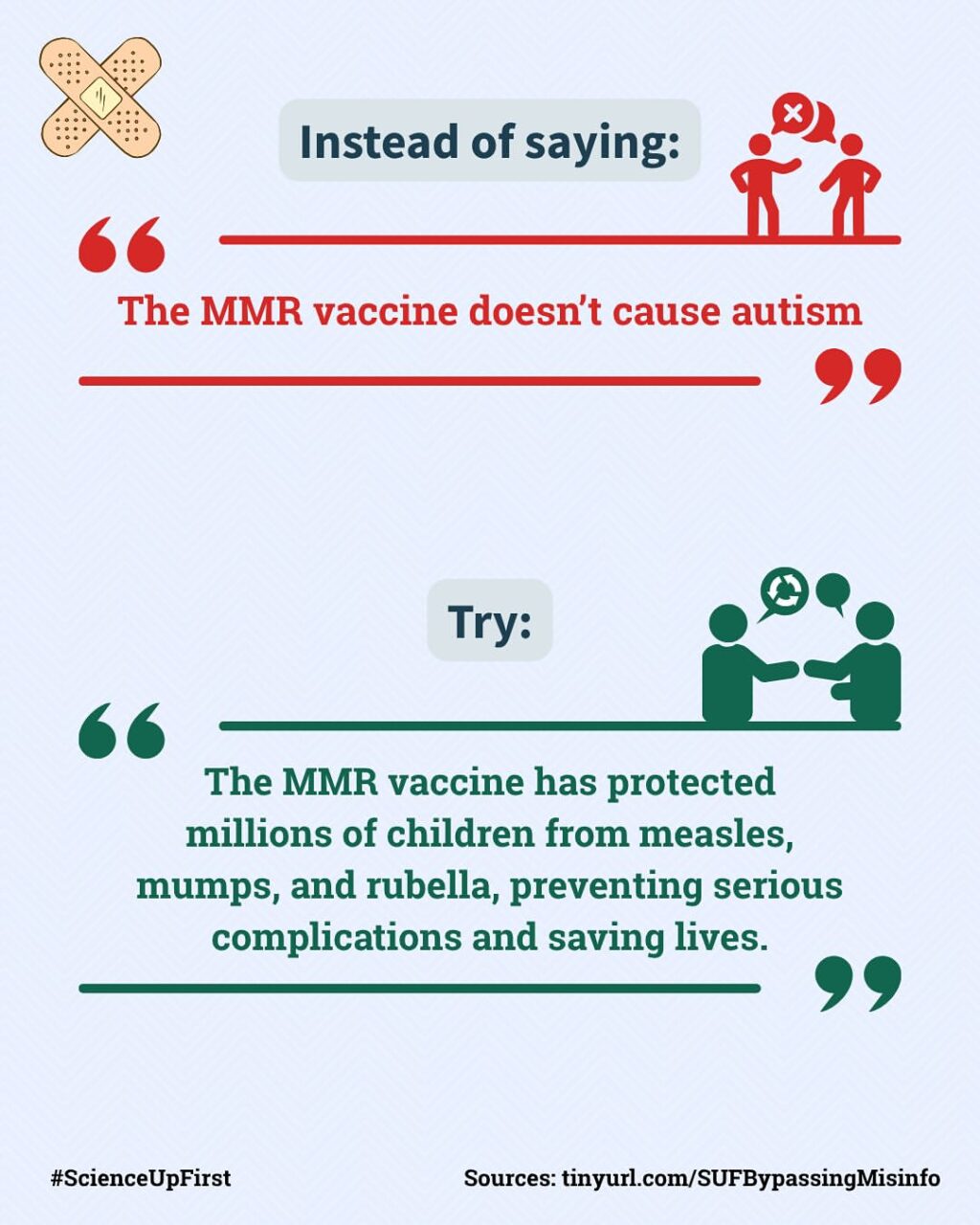

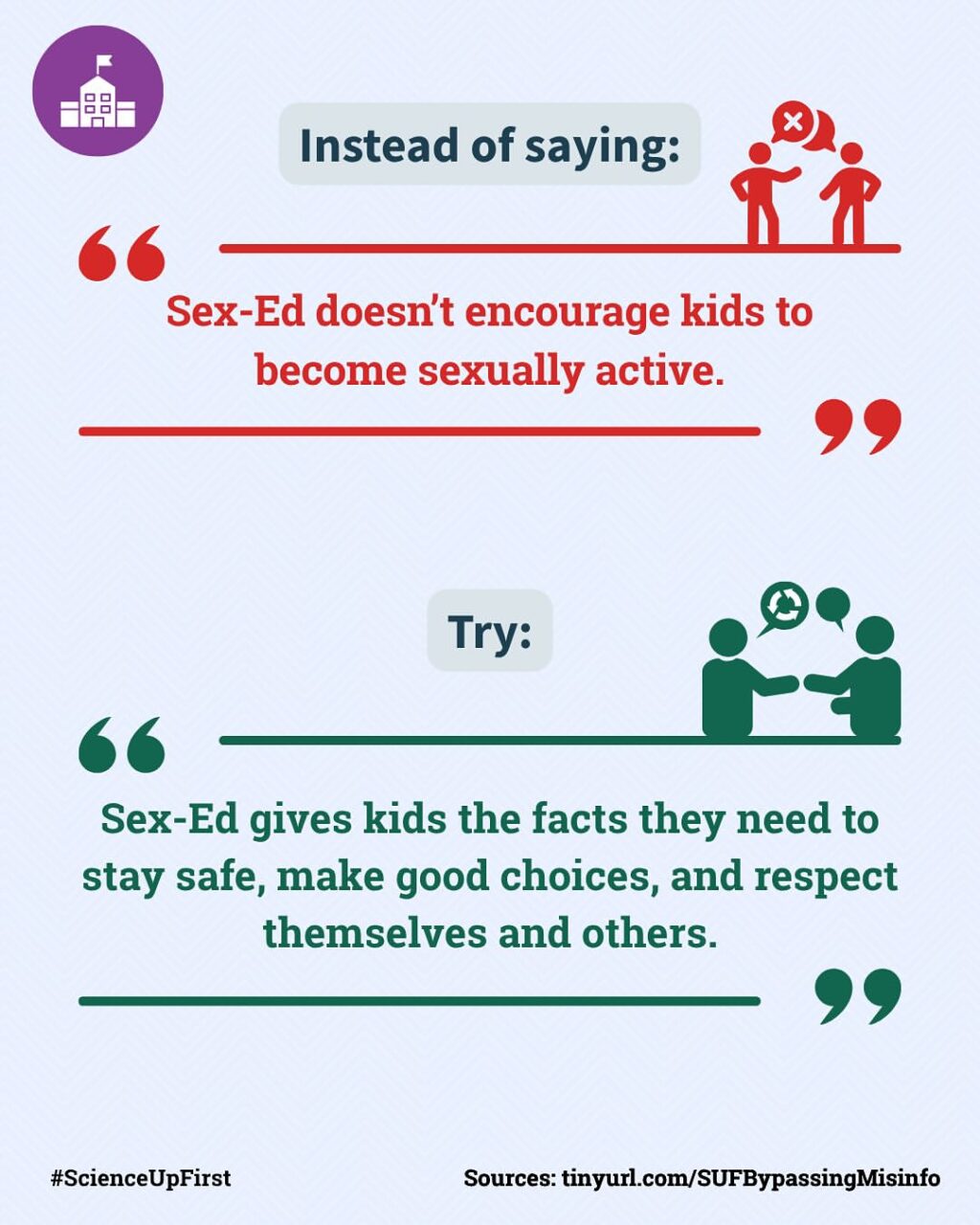
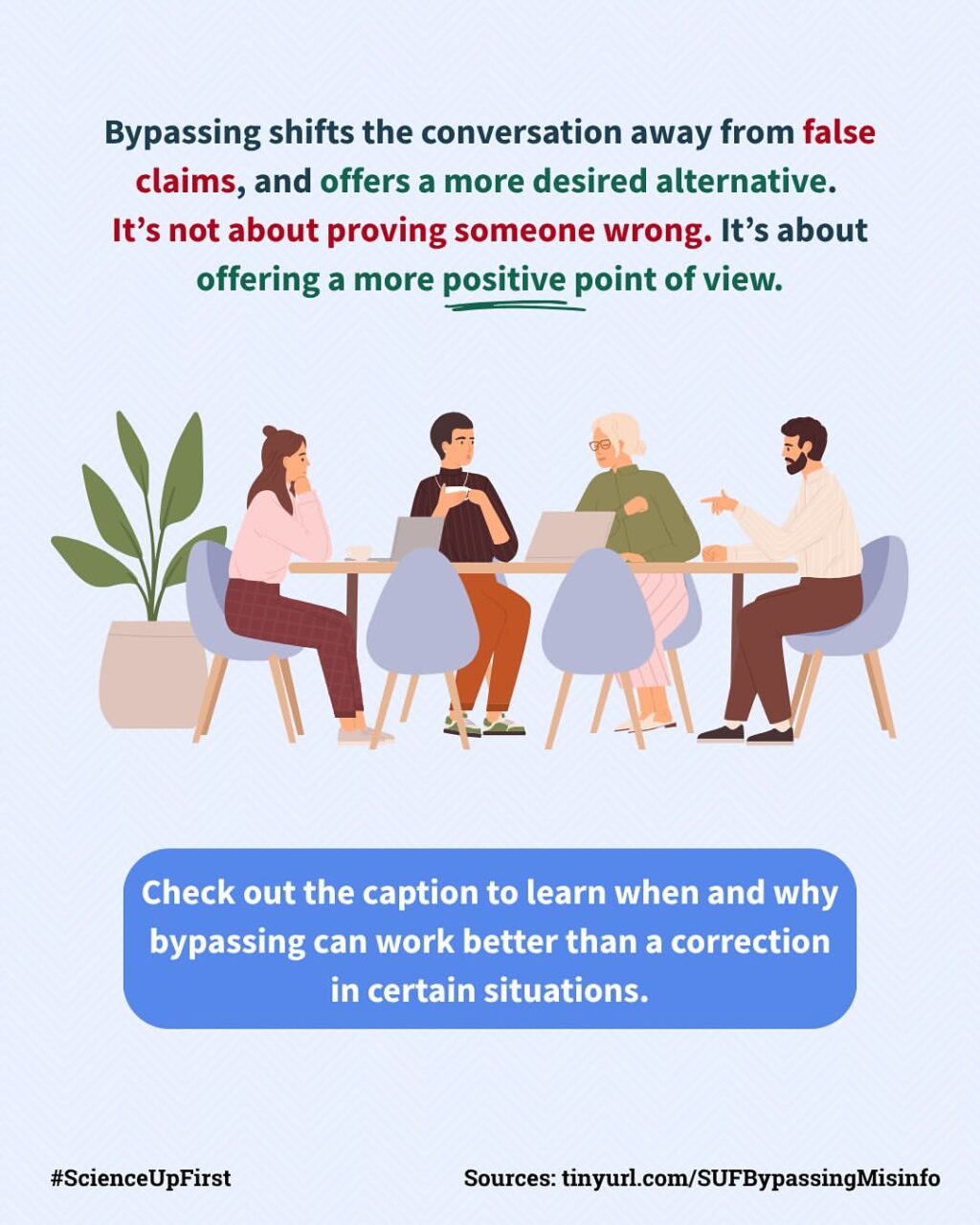
When someone believes something that’s inaccurate, our first instinct is often to correct it with facts. But that doesn’t always work like we hope it would.
Most people don’t like to be contradicted – especially if they care deeply about the topic. Plus, it’s not always easy to find the right words in the moment. You might know something sounds off, but might not have the right facts or numbers to explain why. Even experts sometimes need time to fact-check and respond clearly (1,2,3).
That’s where bypassing can come in handy.
Instead of arguing about what’s false, bypassing shifts the focus from the false information toward a new, more positive alternative (1,2,4).
For example, instead of saying, “No, vaccines don’t cause X,” you might say: “Vaccines have saved millions of lives and reduced childhood mortality worldwide.” (5).
By bypassing misinformation, you avoid confrontation and shift the conversation toward something about the same topic that is both accurate and positive (2,3,4).
But, keep in mind that, bypassing doesn’t aim to correct specific misconceptions or deeply held beliefs. And in some cases – like public health emergencies – a direct correction might still be your best tool. So before jumping in, ask yourself: What’s my goal here? Is it to prove that “vaccines don’t cause harm”? Or to reinforce that “vaccines save lives”? While the first might call for a correction, the second might benefit from bypassing (2,4).
Bypassing (1,4):
• Avoids making people feel attacked.
• Redirects the conversation toward shared values or outcomes.
• Makes space for more than one idea to co-exist – you can hold concerns, while also recognizing the benefits of something.
By bypassing misinformation you are not erasing a false belief, but you are helping build up an alternative one, and that shift in focus can make a big difference (1,2,4).
- Bypassing Versus Correcting Misinformation: Efficacy and Fundamental Processes | Journal of Experimental Psychology: General | November 2024
- Instead of Refuting Misinformation Head-On, Try “Bypassing” It | Annenberg | April 2023
- Is ‘Bypassing’ a Better Way to Battle Misinformation? | Annenberg | November 2024
- Don’t waste time correcting misinformation. Instead, try the “bypassing technique” | Big Think | January 2025
- Global immunization efforts have saved at least 154 million lives over the past 50 years | World Health Organization | April 2024
Share our original Bluesky Post!
Instead of arguing about what's false, bypassing shifts the focus from the misinformation to a new, more positive alternative. Here are some examples and why bypassing can be useful 👉 scienceupfirst.com/misinformati… #ScienceUpFirst
— ScienceUpFirst (@scienceupfirst.bsky.social) May 30, 2025 at 3:50 PM
[image or embed]
View our original Instagram Post!

